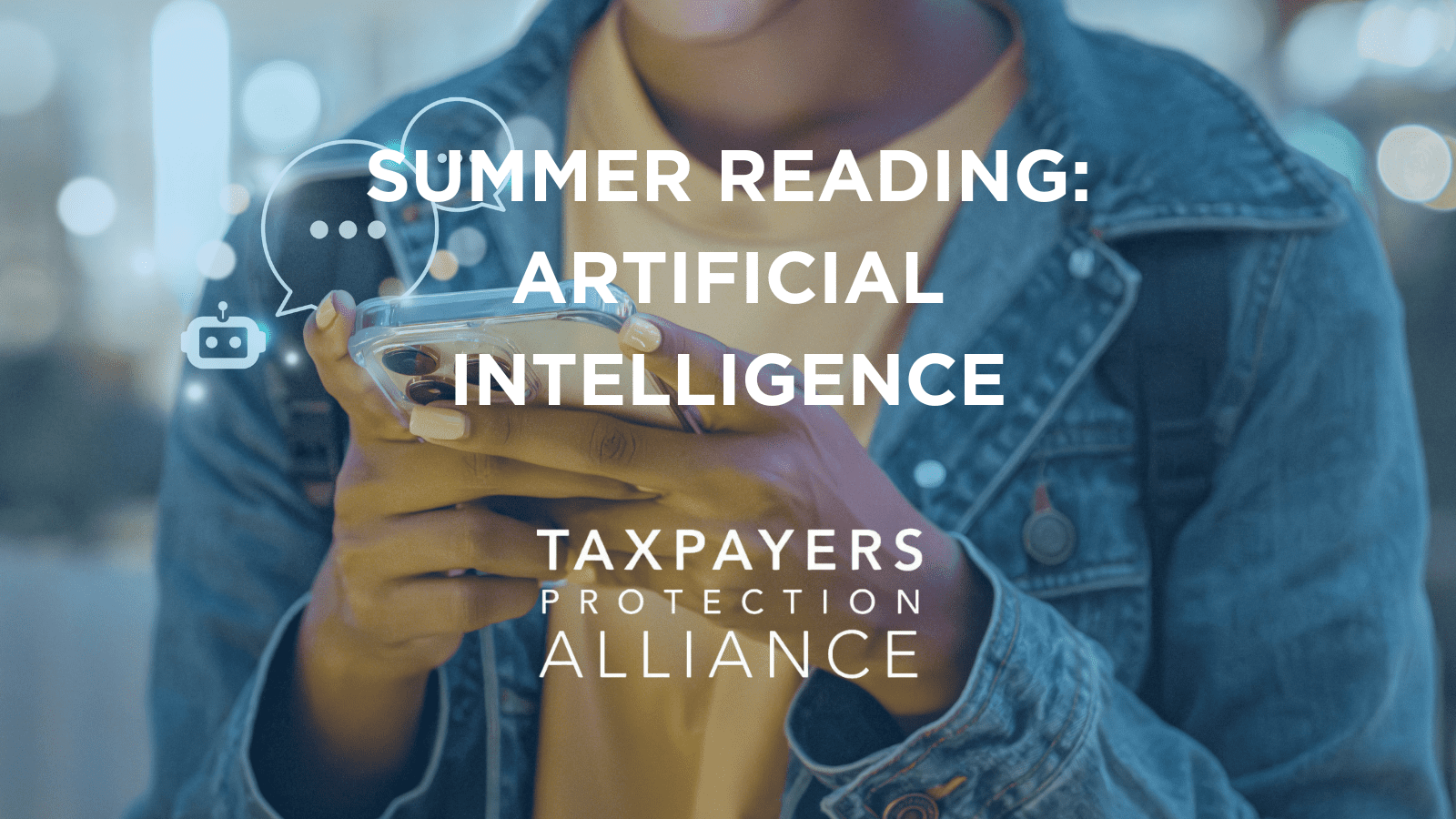
Summer Reading: Artificial Intelligence
Juan Londoño
August 1, 2025
August is the perfect time for lawmakers to trade the sweltering heat of Capitol Hill for a cool, air-conditioned café, laptop in tow, diving into the latest policy debates while sipping iced coffee. But even as members of Congress escape to their home districts, one topic refuses to take a vacation: artificial intelligence (AI). Like an overzealous beach umbrella that keeps popping up no matter how many times you try to fold it down, proposals to regulate AI continue to dominate headlines, policy discussions, and regulatory agendas with relentless persistence.
Following the release of the White House’s AI Action Plan, the buzz around the emerging technology will continue to increase. The technology is all-but-certain to take hold in various sectors of the economy, and ensuing discussions over the potential impact of AI cover an array of topics ranging from privacy to intellectual property. The August recess is the perfect time to grab a caffeinated beverage, devour as much on AI as possible, and buckle up for AI policy discussions that will surely arise in the next year.
The brief and fierce debate over the AI regulatory moratorium in the One Big Beautiful Bill reminded policymakers that “who regulates AI?” is as important of a question as “how should AI be regulated?” As R Street Institute analyst Adam Thierer exposes, granting states free rein to regulate AI would lead to a complex and wholly contradictory regulatory network with nonsensical statutes at both federal and state levels. This would create a compliance nightmare for companies and confuse consumers who will not have a clear picture of what their rights and responsibilities are. As Taxpayers Protection Alliance (TPA) Chief Regulatory Analyst Juan Londoño explained, a moratorium needs to be passed to allow the technology to mature and benefit taxpayers and consumers.
The potential “disruption” posed by AI in the economy has sparked concerns for various industries worried about the impact on jobs and their business models. A key question has been the use of copyrighted materials for the training of AI models. In this white paper, Foundation for American Innovation analysts Joshua Levine and Tim Hwang emphasize the stakes of addressing these copyright questions clearly and promptly, as well as the implications for the global economy. They argue:
Regardless of the outcome, the persistent uncertainty around the legal standing of training raises real costs, as well. In all likelihood, pending lawsuits that appear likely to set precedent in this area will take years to resolve. Facing this uncertainty, leading AI developers may very well choose to rebase their model development operations in countries with more favorable environments for training. Other nations, such as Japan and Singapore, have explicitly carved out exceptions for the training of AI systems, and others could follow suit in an effort to capitalize on a sustained period of American inaction.
However, if AI is to deliver on its promise, the companies offering AI products must be able to deploy the physical infrastructure required to power it. From permitting to obtaining the power to turn the lights on at data centers, powering AI has presented many challenges,. In this report, Institute for Progress’ Arnab Datta and Tim Fist expose the constant roadblocks companies are facing in building up infrastructure and getting the energy needed to power their operations:
However, the US faces significant barriers to securing this consistent energy supply due to limitations in how fast new transmission lines and power generation can be deployed. Existing power grids are not equipped to handle the sudden surge in demand from AI data centers, causing bottlenecks in power delivery. For example, developers in Oregon recently found that converting a shuttered tile factory into a data center would require an extensive “line and load study” by the local power company. They had previously assumed power would not be a problem for their plans, but decided to build their own power source “off the grid” to avoid the delay.
AI companies have also seen zoning laws and taxes weaponized against their data centers, as exposed in this op-ed by TPA’s Juan Londoño. From ever-rising property taxes to the outright prohibition of data centers in zoning laws, lawmakers have been pulling various levers to push data centers out of these localities.
Another major point of discussion on AI policy is how AI-led automation will replace human labor, especially in technical or highly complex fields like healthcare or legal work. Jennifer Huddleston, senior fellow in technology policy at the Cato Institute, argues that AI should be a welcome addition to the courtroom:
AI should not be seen as a substitute for the full services of an attorney, nor will it likely be able to handle complicated and nuanced cases. But it could provide some guidance or stop-gap in many scenarios where the alternative might be a lack of legal services or a poor self-help attempt. AI-enabled tools could help people understand when a situation might actually merit legal action. They could assist those currently awaiting more formal legal services in understanding what to retain or what information their attorney may need, or in guiding through basic questions around common legal needs like writing a will, forming a business, or challenging a parking ticket.
The excitement around AI will likely translate to an avalanche of policy developments in the months to come. This summer break is a perfect opportunity to prepare for the pivotal policy discussions to come. As the technology continues to mature and its use becomes more widespread, the potential for regulation will unfortunately increase as well.
TPA has played an active role in filing comments to agencies, educating policymakers, and informing the public about the importance of getting AI right for the past several years, and will do so for years to come. The cost of overregulating one of the most important technologies in recent times is simply too high for taxpayers and consumers.
